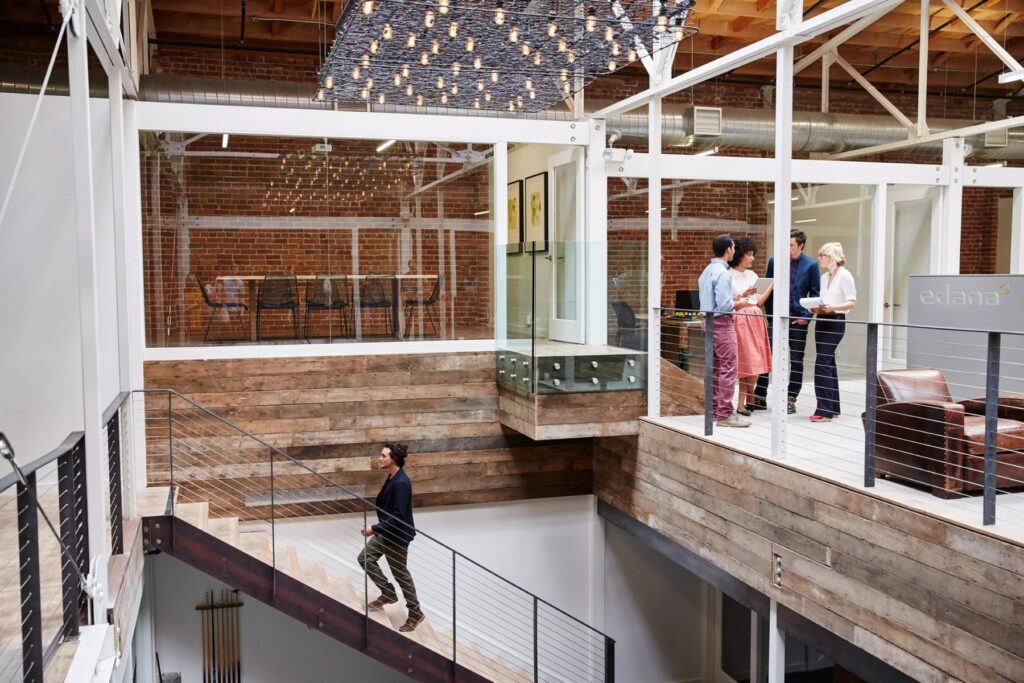Summary – Under pressure to deliver digital transformation, designing a prototype before any development aligns business, design, and technical teams, validates usability, and uncovers friction points without risking costly iterations. Whether low-, medium-, or high-fidelity, it brings user flows to life, gathers concrete feedback, and clearly distinguishes the prototype from the PoC (technical) and the MVP (production). Solution: adopt a UX-first methodology with Figma/Miro, early user testing, and iterative cycles to secure budget, timelines, and final product adoption.
In a context where digital transformation is a powerful strategic lever for companies of all sizes, and where the quality of a digital product and its alignment with strategic and business needs are crucial, the prototyping phase plays a central role in the process. Indeed, before deploying a single line of code, it is essential to materialize the interface and the user journey in order to anticipate business requirements and avoid costly development iterations. The prototype thus serves as a shared thread: it ensures alignment among business, design, and technical teams around a common vision of the future product. By leveraging this tool, Swiss and international organizations strengthen their agility and mitigate the risks associated with designing custom internal applications, client portals, or specialized business tools.
Defining the Prototype: What It Is (and What It Is Not)
The prototype is a visual and interactive model representing the final interface without providing the underlying technical logic. It is neither a technical PoC nor a functional MVP, but a prototype dedicated to the user experience.
Origin and Concept of the Prototype
The term “prototype” originates from engineering, where it refers to a first-of-its-kind model used to validate a concept before production. Applied to digital development, it focuses on the visual and ergonomic aspects, materializing screens and user flows without coding the functionalities.
This representation can take the form of low-fidelity wireframes or high-fidelity mockups with simulated interactions. It serves as a discussion and validation tool before embarking on actual development.
In a digital project, the prototype is thus the first tangible version of the interface, shared with users and stakeholders. Thanks to it, friction points and unclear areas in the ergonomics are quickly identified.
Difference Between Prototype, PoC and MVP
A PoC (Proof of Concept) focuses on the technical feasibility of an innovation or specific module. It tests a technology or integration without concern for the interface or user journey.
The MVP (Minimum Viable Product) is the first version of a product offering a minimal set of usable features. Unlike the prototype, the MVP is deployed in production and must address issues of performance, scalability, and security.
The prototype, by contrast, is purely centered on design and experience. It is not executed in production and does not deliver final code. It remains a validation tool before moving on to the technical development phase.
Types of Prototypes and Levels of Fidelity
Low-fidelity prototyping typically relies on rough black-and-white sketches to map out screen areas and user flows. It allows for rapid iterations on information architecture and zoning.
Medium-fidelity prototypes introduce basic graphical elements and interactions, such as page transitions or dropdown menus. They offer a more realistic preview while remaining easy to adjust.
Finally, high-fidelity prototypes faithfully reproduce the target interface: typography, colors, micro-interactions, and animations. They form a near-realistic model capable of gathering feedback very close to the final experience.
Concrete Example of a Prototype in the Parapublic Sector
For an NGO operating in the field of education and para-public services, we created a high-fidelity prototype for its new internal process management portal. Using Figma and advanced work from our design teams, they simulated the workflow for processing requests and registrations and validated the journey with key users even before starting development. This exercise clarified several navigation and information-prioritization points, thereby preventing costly redesigns once the code was written.
Key Objectives of Prototyping in Your Digital Projects
Prototyping serves to test ergonomics and the user journey before any development. It also enables gathering stakeholder feedback and aligning the project vision.
Validating Ergonomics and User Experience
The prototype provides a visual support for evaluating ergonomics: element layout, readability, accessibility, and graphical consistency. Users interact with the screens as if they were functional, revealing blocking points or misunderstandings.
In sum, the interface is tested in an almost real-life setting without exposing the company to risks related to untested code. Feedback is structured and based on concrete scenarios rather than abstract specifications.
This step significantly reduces rework once development begins, as major adjustments have already been identified and validated by users.
Previewing and Optimizing the User Journey
Beyond ergonomics, the prototype allows simulating different branches of the journey: account creation, navigation between modules, error handling, or action confirmations. Each path is tested to ensure optimal fluidity.
This makes it possible to measure path length, ease of use, number of clicks when relevant, and clarity of feedback messages. If a process appears too complex, it is simplified or reorganized before development.
This iterative work on the user journey contributes to increasing end-user satisfaction and reducing abandonment rates at launch.
Collecting Feedback and Aligning Stakeholders
The prototype serves as a concrete asset during validation workshops: business executives, UX/UI designers, IT, and operations teams share the same view of the forthcoming tool. Feedback is factual and focused on improving the experience.
Discussions are more efficient because they comment on an interactive mockup rather than specification documents. Misunderstandings are limited, and decisions are made more quickly.
This early collaboration strengthens team engagement and provides a shared vision of the product, essential for the success of tailor-made projects, whether it’s an internal application or a client portal.
Example of Prototyping in the Insurance Sector
A Swiss insurer held a series of workshops where each Miro-based prototype was tested with business managers and IT teams. Real-time adjustments reduced the functional specification phase by 30% and ensured better adoption of the future tool.
Edana: strategic digital partner in Switzerland
We support companies and organizations in their digital transformation
Benefits and Limitations of Prototyping
The prototype prevents costly design errors and accelerates decision-making. However, it does not test performance, technical feasibility, or security.
Cost Reduction and Time Savings
By detecting interface adjustments before development, prototyping limits rework and code rewrites. Each visual iteration is less expensive than a post-deployment fix.
The project budget is thus optimized. Business and technical teams quickly agree on a validated version, decreasing validation cycles and late-stage trade-offs.
In the long run, a well-designed prototype streamlines communication and reduces misunderstandings, freeing up time for implementation and scaling the solution.
Improving User Adoption
An interface tested with target users ensures that the future product will meet their expectations. Feedback inspires iterations centered on real needs, strengthening buy-in and satisfaction.
Adoption accelerates at launch: users find calibrated journeys and ergonomics they helped shape, thus shortening the learning curve.
This UX-first approach is particularly critical for internal business tools, where resistance to change can be strong if the interface seems unsuitable.
Limitations: No Technical Feasibility or Performance Tests
The prototype does not provide evidence regarding the feasibility of underlying technical choices: architectural constraints, security, scaling, or integration with existing systems still need validation during development phases.
It does not measure response times or server resource consumption. Performance, security, and scalability tests take place later, in a development or pre-production environment.
It is therefore essential to plan these technical verifications and not confuse the prototype with the operational version of the product.
Concrete Example of Prototype Limitation
A Swiss industrial equipment manufacturer prototyped its future supervision dashboard in Adobe XD. Although the ergonomics were validated, technical constraints linked to real-time data volume emerged during backend development. The architecture had to be redesigned to ensure performance, but the UX work remained unchanged thanks to the initial prototype.
How to Design an Effective Prototype: Methodology and Tools
Designing an effective prototype begins with understanding user and business needs. Next, structured collaboration with a UX/UI designer and the use of tools like Figma, Miro, or Adobe XD are essential.
Understanding User and Business Needs
The listening phase involves gathering end-user and business stakeholder expectations. Objectives, constraints, and priority use cases are identified.
Interviews, co-design workshops, and field observations help formalize personas and scenarios. This user foundation ensures the prototype addresses actual challenges.
This information directly feeds the functional requirements and guides the creation of the first wireframes.
Collaboration with a UX/UI Designer
The UX designer acts as a facilitator: they transform needs into optimized user journeys, while the UI designer takes care of visual identity and graphical consistency.
By working closely with business and technical teams, they ensure each interaction is both ergonomic and technically feasible, favoring a modular and open-source approach.
Regular mockup reviews ensure buy-in and validate choices before moving to higher fidelity.
Choosing and Mastering Prototyping Tools
Figma, Adobe XD, and Miro are among the most widely used solutions. They offer built-in sharing, commenting, and animation features, facilitating remote collaborative work.
These tools rely on reusable component libraries, ensuring graphic consistency and accelerating screen production. They also integrate with design token systems and open-source or proprietary platforms as needed.
The tool choice depends on project context, internal culture, and collaboration needs (asynchronous or synchronous).
User Testing and Rapid Iterations
Once the initial prototype is produced, user testing sessions are organized with a representative panel. Feedback focuses on screen comprehension, journey fluidity, and content relevance.
Each comment is prioritized and integrated into a rapid iteration plan. The prototype evolves over several short cycles, until satisfaction is deemed sufficient to move to development.
This iterative pace ensures the final tool is centered on business needs and that risks related to misunderstandings are preemptively eliminated.
Drive Your Digital Project with a User-Centered Prototype
In summary, prototyping is the foundation of a successful digital approach: it clearly defines the interface, tests journeys, and unites stakeholders before any technical development. This approach reduces costs, accelerates decisions, and improves final adoption by ensuring an optimized user experience.
Faced with your digital transformation challenges, our UX/UI experts, strategists, and software architects are here to support you in designing prototypes that match your business needs, as well as in developing and integrating complete production-ready digital solutions. Together, we establish agile collaboration and deploy scalable, modular, and secure tools without vendor lock-in.







 Views: 1096
Views: 1096